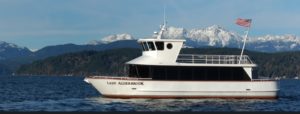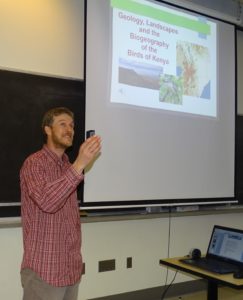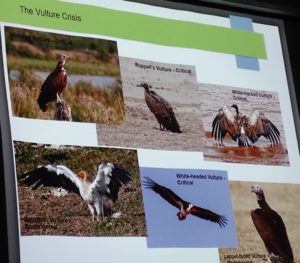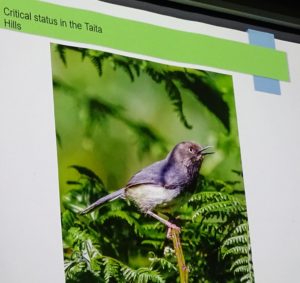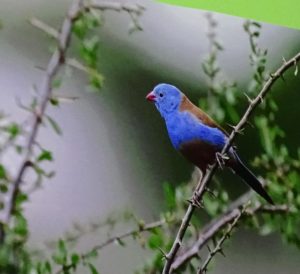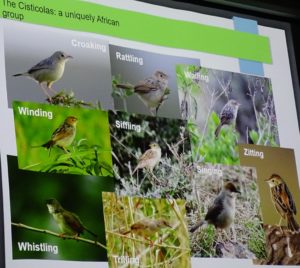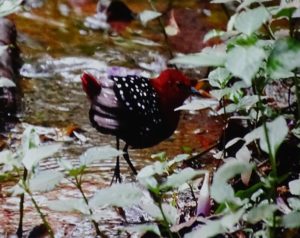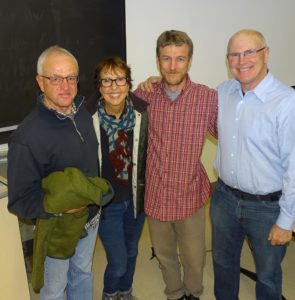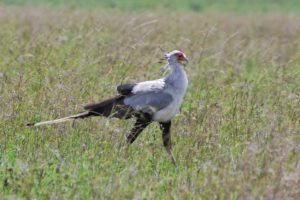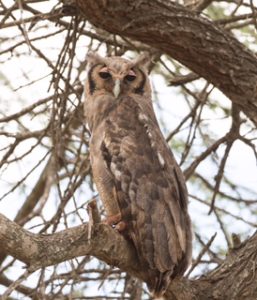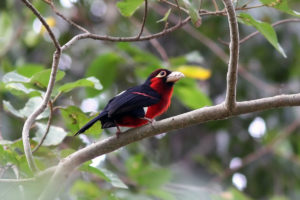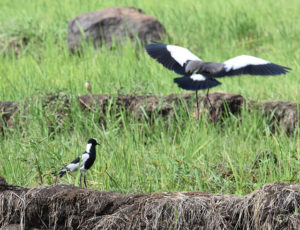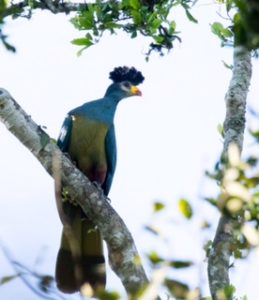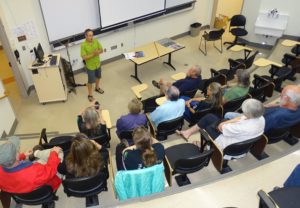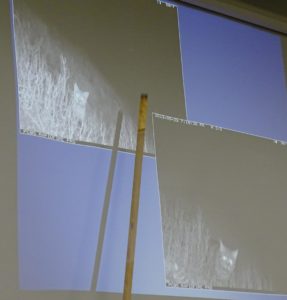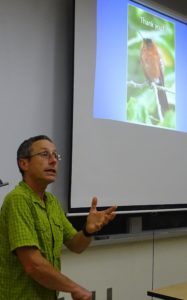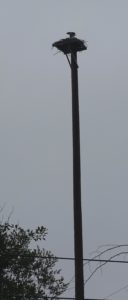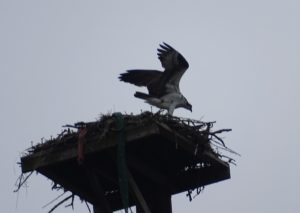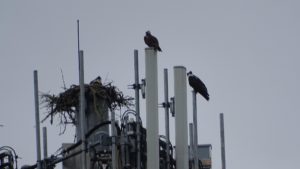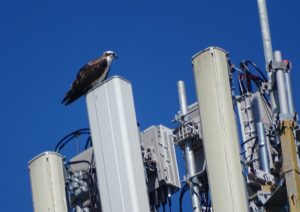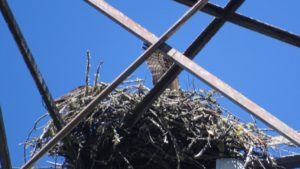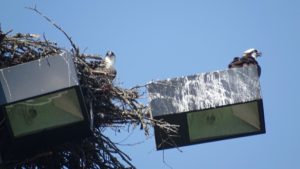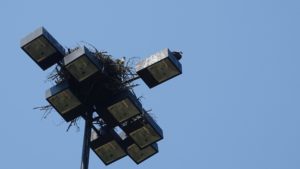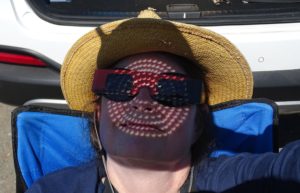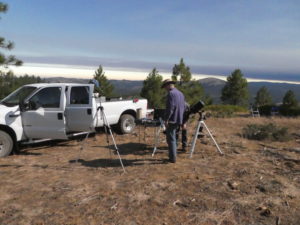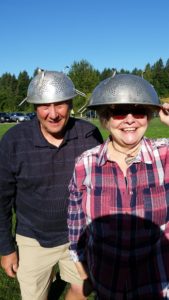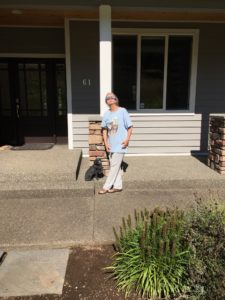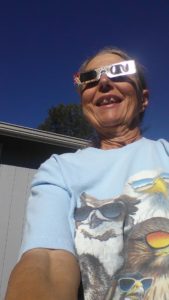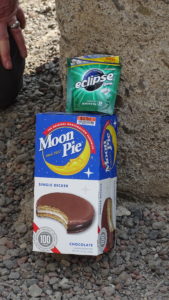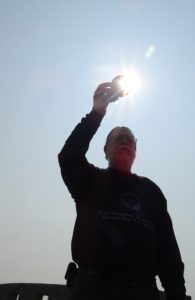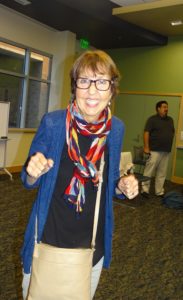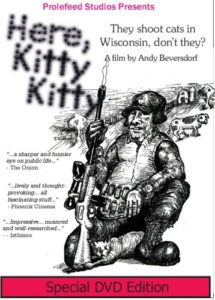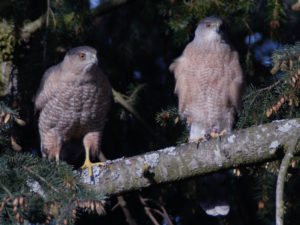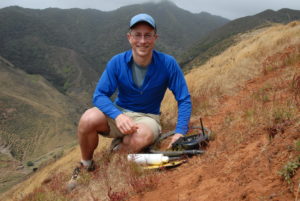On October 11, 2017, ABC welcomed Ed Deal of the Seattle Cooper’s Hawk Study. Ed is the real deal! He was sucked in by Bud Anderson’s hawk class years ago, a class most of us are familiar with, too. So he started out as an amateur, a hobbyist, an enthusiast, but is certainly a citizen scientist now, with emphasis on “scientist.” The study was started in 2003 by Jack Bettesworth and is now run by Ed Deal and Martin Muller, who do virtually all of the observations and collection of data, as well as banding. This is an all-vounteer, self-funded effort to which Ed devotes more than half his year for almost 24 hours a day! Not coincidentally, this study ramped up at the same time that urban Coops were ramping up, which started in the 1980s and 1990s.
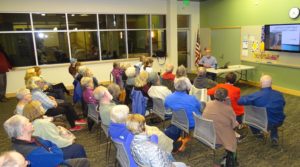
ABC welcomes Ed Deal
This past season they documented 44 nest-building pairs in Seattle! Probably more since they couldn’t be everywhere. Other cities are recording similar upticks. Is population increasing, or are we getting better at finding them? Both, probably. As carrying capacity is approached (and what is that capacity?), will there then be a decline? These are some of the many reasons for studies like this.
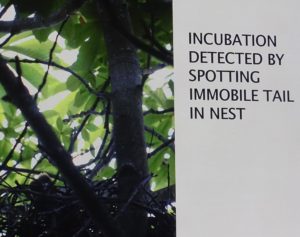
Detective tips for finding active nests
Interesting facts are that one-third of young don’t make it to adulthood. The male does all the hunting during incubation and young in the nest. Incubation is noted by the tail tip sticking up out of nest.
Nests do not decrease native songbirds in a measurable way since Cooper’s hawk nests deter crows, squirrels, and other nest predators.
Coops eat more than just birds. This was news to me! Diet is largely Starling, House Sparrow, Robin, Rock Pigeon, Norway Rat, Flicker. So they’re taking advantage of introduced species. There is a recent report of taking a crow! Crows and Pigeons will outweigh a Coop, but the hawks don’t attempt to fly away with large prey, but to butcher it on site.
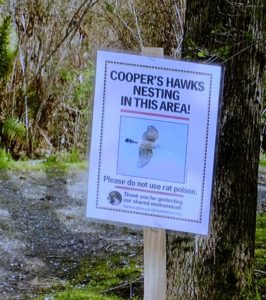
Let the birds eat the rats safely!
Morbidity and mortality include poisoning via Frounce (trichomoniasis), AKA “Pigeon’s Revenge,” from eating Rock Doves, as well as rodenticides from eating poisoned rodents. The better option to rodenticides is to let the Cooper’s take care of your rodents, not poison both rodents and hawks. Ed has been posting signs in neighborhoods with nests to try to get the word out. The signs are suggested by RATS (Raptors Are The Solution) which has lots more info at http://www.raptorsarethesolution.org/
Ed’s sense of humor delighted our group, especially with his deceptive deadpan countenance! He introduced us to a new word that might prove useful in many birding situations: “WOOF: While engaged in a lengthy observation of a perched raptor in hopes of finding its nest, you glance away for a brief second. When you look again, the bird has vanished without a trace. He “woofed” me.”
Why do we have so many Cooper’s in cities? Ed paraphrases Willie Sutton: “That’s where the prey is.”
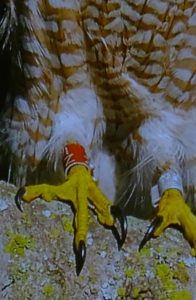
An adult female with red band on right tarsus, 1 over Z
ID tips: Ruddy cheek on female, gray on male. Females with orange band on right tarsus, male purple band on left. These are just the current Seattle study birds, though! Some elderly birds have blue bands.
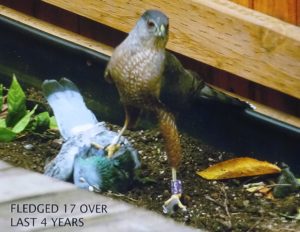
Four-year-old male (0 over 3) has fledged 17 young over 4 years. He knows how to bring home the bacon.
Further information given is that urban nests are highly unlikely to be Sharpies. Nests can be in any kind of tree, maybe a third of the way down in a tall tree. Big-leaf Maples and most every other kind of tree we have are used.
Be glad this isn’t happening with Goshawks, as it is in Europe. There are at least 100 known urban Goshawk nests in Berlin alone. This has depleted most other raptors significantly.
Ed’s presentation was peppered with info and great photos of actual Seattle nests and birds whom Ed knows personally, as well as entertaining videos by banding partner Martin Muller.
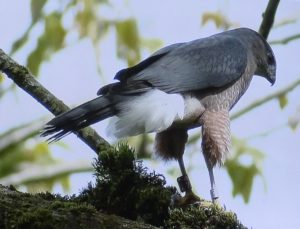
Adult Male with purple band on left foot and fluffy white undertail coverts
Next morning several of us were birding together at Theler Wetlands and saw a Coop! We also discussed how much we enjoyed the presentation. Faye said, “Now I know how to tell male from female — by the color bands!” Lisa thought the incidence of extra-pair copulation was a sneaky way to improve genetic diversity. Donna and Lisa both appreciated the distance photos which showed how we’d actually see birds or nests (or not see them) in real life.
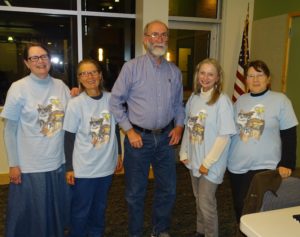
Ed Deal is flanked by Diane Y-Q, Carol Smith, Faye McAdams Hands, and Laurel Parshall
Thanks to Jerry and Clarice for taking Ed out to dinner to try to defray his travel costs and pick his brain some more.
Thanks to WOS for reprinting that great article in Crosscut that we had already had the privilege of reading. Read it here or in the current WOS newsletter: http://crosscut.com/2017/09/seattle-coopers-hawk-bird-study-raptor/

